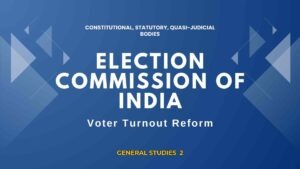Special Economic Zones Rules - Important Notes for UPSC
Special Economic Zones Rules
🧭 Context:
The Government of India has recently relaxed certain provisions of the SEZ Rules, 2006 to promote semiconductor and electronic component manufacturing, a key sector under India’s push for self-reliance in electronics.
🏗️ What are Special Economic Zones (SEZs)?
Definition: SEZs are specially designated areas within a country with different economic laws, policies, and regulations aimed at encouraging investment, exports, and industrial growth.
Governing Act: Special Economic Zones Act, 2005
Governing Rules: SEZ Rules, 2006
Administered by: Ministry of Commerce and Industry
🔑 Key Features of SEZ Rules, 2006:
Minimum Land Requirement:
General SEZs: Minimum 50 hectares
Sector-specific SEZs: Varied requirements
Export Orientation:
Units must be net foreign exchange earners.
Focused on production for global markets.
Single-Window Clearance:
Fast-track approval by the Board of Approval (BoA).
Simplified compliance system.
Tax and Fiscal Incentives:
Income tax exemptions
Customs duty and GST waivers
Other state-level incentives
Encumbrance-Free Land:
Land must be free from legal disputes or administrative issues.
Deemed Foreign Territory:
SEZs treated as separate customs territory:
No import duties
Simplified trade norms
🆕 Recent Relaxations in SEZ Rules (2024-25):
Land Norms Eased:
Minimum land size for semiconductor/electronics SEZs reduced from 50 to 10 hectares.
Encumbrance-Free Clause Relaxed:
SEZs can now be developed on land with pending legal/administrative charges.
Domestic Supply Allowed:
SEZ units in semiconductors and electronics can now sell in domestic market after paying applicable duties.
Encourages backward linkages and boosts domestic demand.
🏭 New High-Tech SEZ Approvals:
Micron Semiconductor SEZ:
Location: Sanand, Gujarat
Investment: ₹13,000 crore
Focus: End-to-end semiconductor fabrication, assembly, testing
Significance: Major step towards building chip-making capacity in India.
Aequs SEZ (Hubballi Durable Goods Cluster):
Location: Dharwad, Karnataka
Investment: ₹100 crore
Focus: Electronic components manufacturing
For: Domestic and export markets
🌍 Significance of Reforms
Boosts Make in India and Atmanirbhar Bharat goals.
Encourages FDI in critical electronics sectors.
Addresses global semiconductor shortage.
Enhances employment, exports, and technological innovation.
Mains-Based Questions on Special Economic Zones Rules
Q1. Discuss the significance of the recent relaxation in SEZ Rules, 2006 in promoting India’s semiconductor and electronics manufacturing sectors. (10 marks)
✅ Answer Framework:
Introduction
Define SEZs as designated zones with economic incentives aimed at boosting exports and manufacturing.
Mention recent government steps to relax SEZ Rules for the semiconductor and electronics sectors.
Body
🔹 Original SEZ Rules, 2006 – Key Features
50-hectare minimum land requirement
Export-oriented focus
Encumbrance-free land clause
Tax incentives and deemed foreign territory status
🔹 Recent Relaxations (2024-25)
Land size reduced to 10 hectares for semiconductor/electronic SEZs
Land need not be fully encumbrance-free
Domestic supply permitted with duties
🔹 Significance for Semiconductor Sector
Attracts investment from global players (e.g., Micron SEZ in Gujarat)
Supports India’s goal under the Semicon India Programme
Builds end-to-end chip design and manufacturing capacity
🔹 Significance for Electronics Manufacturing
Enables scale and efficiency for exports and domestic market
Facilitates growth of clusters like Aequs SEZ in Karnataka
Conclusion
The relaxations make SEZs more flexible and competitive, aligning policy with India’s strategic goals of self-reliance and integration into global value chains.
Q2. Critically examine the role of SEZs in promoting India’s export-led industrialisation strategy. Do the recent reforms address the challenges faced by SEZs? (15 marks)
✅ Answer Framework:
Introduction
Define SEZs and their role in export-led growth.
Highlight India’s SEZ journey since 2005 Act.
Body
🔹 Achievements of SEZs
Boost to exports (especially IT, pharma, textiles)
Attracted FDI and generated employment
Simplified regulatory and customs procedures
🔹 Challenges Faced by SEZs
Underutilization of land and infrastructure
Rigid land norms (50-hectare rule)
Restrictions on domestic sales
Unviable locations and poor connectivity
Global changes in WTO norms on subsidies
🔹 Recent Reforms (2024)
Land requirement reduced for semiconductor SEZs
Encumbrance-free clause relaxed
Domestic supply allowed with duties
🔹 Impact of Reforms
Makes SEZs more attractive for high-tech industries
Encourages investment in strategic sectors (e.g., electronics)
Addresses long-standing issues of land flexibility and market access
🔹 Remaining Issues
Lack of a clear exit policy
Policy uncertainty on grandfathering of benefits
Global trade compliance (WTO rules)
Conclusion
SEZs remain a key pillar for industrial policy.
Recent reforms are a step in the right direction, but holistic revamp needed to sustain their relevance and effectiveness.
Q3. India aims to become a global hub for semiconductor manufacturing. In this context, evaluate the role of SEZ policy reforms in achieving this ambition. (10 marks)
✅ Answer Framework:
Introduction
Highlight India’s ambition under the Semicon India Programme.
Mention the global semiconductor shortage and the need for self-reliance.
Body
🔹 Challenges for Semiconductor Manufacturing in India
Capital intensive and technologically complex
Long gestation periods
Inadequate ecosystem (skilled labor, supply chains)
🔹 How SEZ Reforms Support This Ambition
Land norm reduced to 10 hectares → Eases entry
Legal land encumbrance clause relaxed → Faster project initiation
Domestic supply allowed → Assures demand and backward integration
Financial incentives + tax benefits continue under SEZ umbrella
🔹 Examples
Micron SEZ in Sanand, Gujarat → ₹13,000 crore investment
Creation of chip manufacturing ecosystem and jobs
🔹 Broader Policy Synergy
PLI Scheme for semiconductors
Infrastructure development (logistics, power, water)
Skilling initiatives for VLSI and chip design
Conclusion
SEZ reforms provide a foundational policy push to semiconductor manufacturing, but success depends on execution, global partnerships, and ecosystem development.
Prelims Questions based on Special Economic Zones Rules
-
Special Economic Zones Rules – Important UPSC Notes
The Government of India has recently relaxed certain provisions of... -
National Conference of Estimates Committees – Important UPSC Notes
Lok Sabha Speaker inaugurated the National Conference of Estimates Committees... -
Election Commission of India – Important UPSC Notes
The Election Commission of India (ECI) has launched a tech-driven... -
Banakacherla Reservoir Project – Important UPSC Notes
A fresh inter-state water dispute has arisen between Andhra Pradesh... -
India-Japan Maritime Relation – Important UPSC Notes
India and Japan have intensified bilateral maritime collaboration (India-Japan Maritime... -
UNESCO Global Education Monitoring (GEM) Report
The UNESCO Global Education Monitoring (GEM) Report 2024–25 highlights that... -
Registered Unrecognised Political Parties – Important UPSC Notes
The Election Commission of India (ECI) has initiated the delisting... -
Viksit Bharat Ka Amrit Kaal Report – Important UPSC Notes
Viksit Bharat Ka Amrit Kaal Report - Important Notes for...









